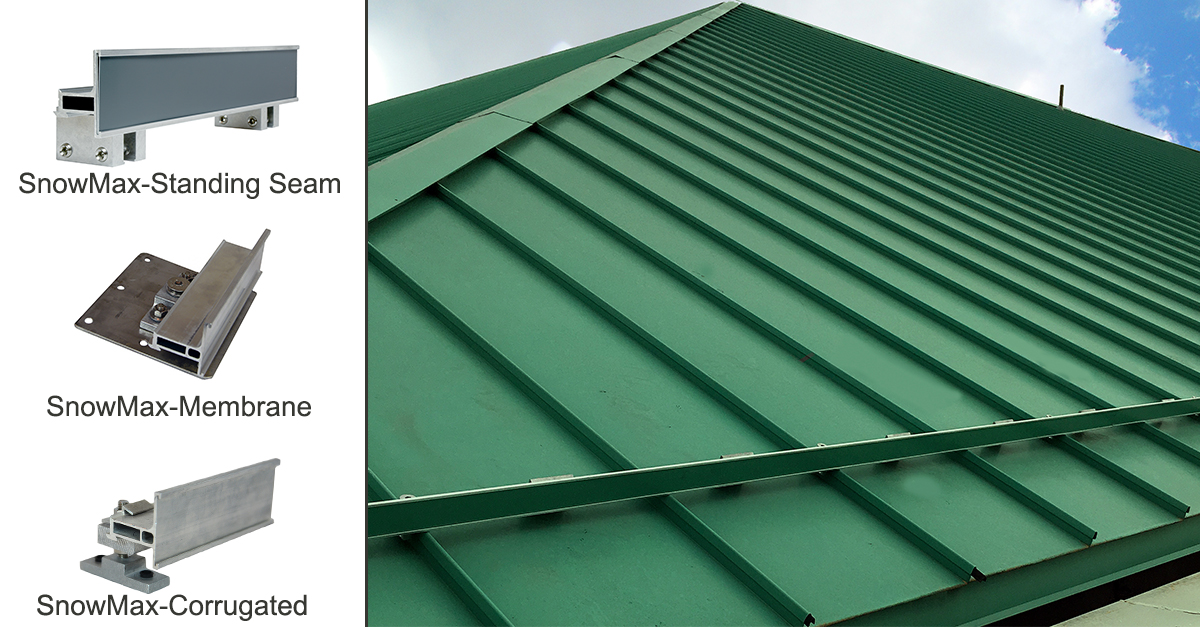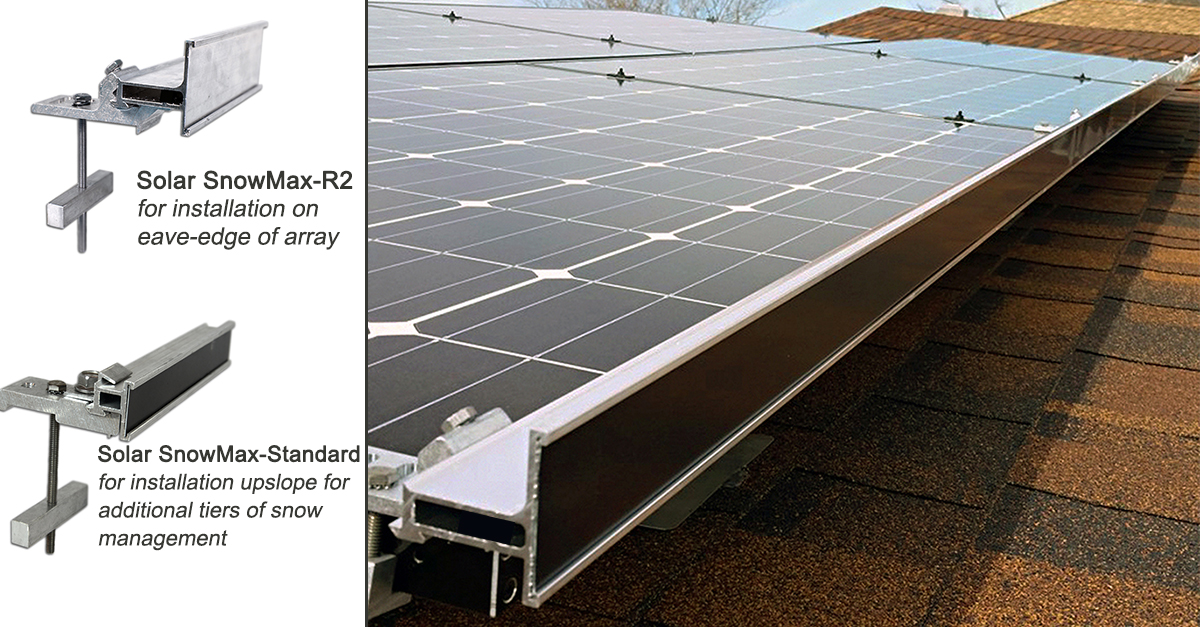Back in the year 2000 we defined a snow guard as a device that is mounted to a sloped roof surface to prevent a potentially damaging single release of snow and ice from that sloped roof (similar to an avalanche of snow on a mountainside). Snow or freezing rain accumulates on a sloped roof surface, and as heat from the building and/or exterior temperatures rise above freezing, a film of water develops between the roof surface and the snow and ice. This water functions like a lubricant, making the roof surface almost frictionless.
Snow guards help prevent damage to:
- Gutters, vents, lower roofs & mechanicals
- Windows & skylights
- Walkways, landscaping, people & vehicles
However, as with all progressive business evolution, the definition has evolved and expanded. A snow guard is a device mounted to a structure which is intended to manage the sudden movement of snow and ice.
Snow guard forms vary depending upon the structural surface upon which snow and ice mitigation is needed. For example, historic devices include snow guards such as our PD10 and PP225 (images below).

- PD10 Pad-Style Snow Guards in Copper
Goldwyn-Smith Hall at Cornell University, Ithaca, NY
Image from Charles F. Evans Company, Inc., Elmira, NY

- PP225 Three-Pipe Height Adjustable Snow Guards in Brass
(Left side of roof: New snow guard installation, brass / Right side of roof: Prior snow guard installation, patinaed)
Benjamin Franklin College at Yale University, New Haven, CT
Image from Titan Roofing, Springfield, MA
As building materials have evolved, so too have snow guard designs, like our PP115 and SnowMax systems.
 pad
pad- PP115 Pipe-Style Snow Guards in Mill Finish
Camden Yards, Baltimore, MD

- SnowMax Fence-Style Snow Retention System
Cleveland County Courthouse, Norman, OK
Image from Valor Systems, Norman, OK
Add in evolving construction materials and processes like solar panels, composite cornices on high rise buildings, synthetic roof shingles (non-porous plastics), evoking building codes intended to minimize shading on city streets but are in actuality creating ice accretion surfaces. Solar SnowMax and the new for 2019 Alpine LedgeGuard were both designed with a specific purpose in mind – managing snow.

- Solar SnowMax-R2 with Black Color Insert Strip
Image from NRG Home Solar, Long Island, NY
Generally speaking, a snow guard or snow and ice retention system is designed to add friction to an otherwise frictionless surface (friction will change as temperatures, mass, and added “melt” interact with the structural surface.)
There are a variety of shapes, styles and materials used to accomplish the end goal of adding friction. In my experience, most snow retention devices will accomplish the “expected results” if used properly. The key is understanding and managing customer expectations when selling and installing snow management systems.
Note: since the time of this writing, Alpine has innovated new products into our solar snow management system including the Solar Snow Dog. The Snow Dog is a 6″ pad-style developed in response to customer demand for a more extended version.
Until next time,
Brian Stearns
President & Founder, Alpine SnowGuards
We keep snow in its place
888.766.4273
Sign up to start using our Online Project Calculator for an immediate layout and project pricing!
Subscribe to our monthly newsletter and keep up on the latest industry and Alpine news, products, and upcoming events!
Alpine SnowGuards designs, engineers, and manufactures snow management systems from our facility in Morrisville, VT. We work closely with leading roofing contractors, engineering firms, developers, solar installers and roofing manufacturers to ensure we deliver quality products that do what we say they’ll do. Alpine SnowGuards can help a building qualify for LEED® credits.
